“Vancouver has a finite amount of land. The prices are only ever going to go up.”
– from ‘City of Glass’, [p22], Douglas Coupland, 2000
[hat-tip ‘proteus’]
Documenting the life of the “Vancouver is running out of land” meme.
We are particularly interested in trying to find record of its earliest mention.
Local historians, help us out. – vreaa
This question previously raised here:
‘Vancouver Housing Affordability – Century Long Crisis or Boom ‘n Bust Cycles?’
VREAA 25 Nov 2012

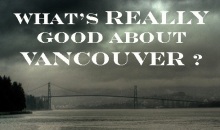
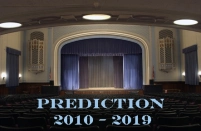



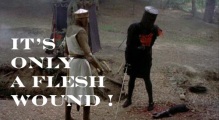


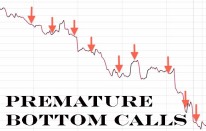
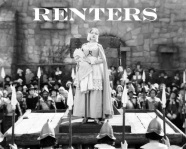







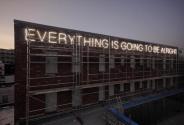
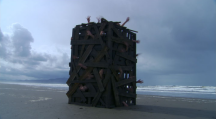
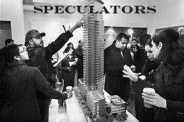

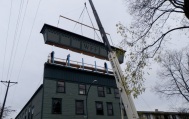
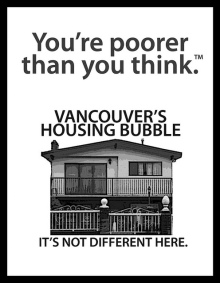



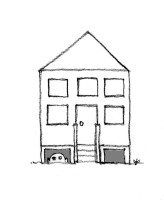





This assertion conveys a fundamental misunderstanding of how assets are priced. Over time, the market is very good at pricing in known information. Only new, previously unknown information will cause prices to temporarily rise faster for one asset class than for another. Vancouver’s land area is no secret, and has long been bid into the cost of real estate.
Agreed; well put.
IMHO, this finite land is a psy-opp. This orgy of Hi Rises “City of Glass ” Potemkin village to give people the impression that we are running out of land .
I’ve GOOGLED this question re: where could we fit all 7 Billion people on earth?. One answer is that the entire population of the world could fit into Ontario , in Single Family Homes, 4 people per house.
Cities are Agenda 21 camps
Once you drive out of the Fraser Valley see how much land is so sparsely populated.
For a similar exercise, see:
‘Land: Not Making Any More; Don’t Need To’
VREAA 9 Dec 2011
How much space would it take to give everybody on the planet a 33×122 lot?
Upon further review, I’ve decided roland just wants a good orgy. Don’t we all..
Roland, are you a holocaust denier?
[/court jester]
Aha! Housing quotes from Vancouver’s official public navel-gazer. I guess he’d bought himself a house by 2000? Let’s see what he had to say on the topic back in 1991:
“When someone tells you they’ve just bought a house, they might as well tell you they no longer have a personality. You can immediately assume so many things: that they’re locked into jobs they hate; that they’re broke; that they spend every night watching videos; that they’re fifteen pounds overweight; that they no longer listen to new ideas. It’s profoundly depressing.”
I’m guessing he was renting in 1991? Truly, a man who talks his book and then books his talk.
Limited land….except for the miles of undeveloped land on the N Shore mtns that they continue to strategically open up to keep the prices/taxes high.
“One of the reasons Coupland bought a second house is that the rate of demolition of midcentury modern houses in Vancouver is accelerating, and he wanted to preserve what was in his own back yard… Mr. Coupland has been sneaking over to his new house, reveling in its open spaces. “Do I feel like I’m cheating on my main house?” he said. “A little bit.”
[OunoDesign] – Douglas Coupland’s magical white house
http://tinyurl.com/l8r54a
“In 2010 I co-founded a coalition that defeated a supposedly done deal for a megacasino in downtown Vancouver. Currently I’m actively annoyed by Vancouver’s other mega affliction: megadevelopers and the way in which they participate in the condo speculation that drives Vancouver’s rampant unaffordability and subsequent brain drain. Not to mention bad architecture. No one wants to live in an executive resort town.” – Lindsay Brown, Principal, OunoDesign
http://blog.ounodesign.com/about/
Wait a minutiae, that is a splendid mid century modern example.
A very nice looking house.
You know, IllustriousEd… this has been bugging me all morning.
Is it still a house?… or, is it now – essentially – an elaborate, ’boutique’ garden shed [or, dare we say it, the functional equivalent of a laneway]… shorn of it’s original significance/purpose [family dwelling/home] by virtue of its transmutation [however well intentioned/executed] into a bourgeois art installation cum guest cottage?
I suppose we should be thankful that it wasn’t bulldozed… and that its restoration was so tastefully implemented.
Still, one is ineluctably forced to conclude that something very important has been lost… however valiantly we enshrine/preserve the few, isolated remaining examples of more egalitarian times.*
[*Which is, I suspect, what Coupland himself was thinking when he coined the expression: “Eisenhower plenitude…”]
arty ante temple tended to by two?
Nem -> Very valid observations.
mcm, japan trad/mod = bestest (imho) … most people gettin some thru jobs/apple … nice table lampage … have one over long outdoor table
ps. ode to land scarcity = old^10 … “bounded on 3 sides, mtns/inlet north, river south, ocean west, blah^3” <- dad'd been saying this since i can remember
Not sure how many people know about Agenda 21….which is basically a Global initiative to force people into hi density using environmentalism as the gun to your head.
If you research it enough…it often cites the Habitat for Humanity held in Vancouver in 1976 as a key launch point for this Agenda 21 . Interesting the ALR was created in 1973.
Coincidence ? I think not.
Roland, are you a holocaust denier?
Nude dude, are you familiar with Godwin’s law?
No, I went to Roland’s blog and he is bitching about the placement of the human rights museum and obliquely refers to things that may or may not have happened – so I am being serious – I spent all of 45 seconds on his blog because it sucks – if you’ll excuse me, I have bacon to cook
Okay. But perhaps we should only hold Roland accountable for the opinions he expresses here. Otherwise this could get… complicated.
Of course, one can always take broader debate to Roland’s blog.
our new red youth campaign will assimilate all … a-ha-ha-ha-ha-ha! … we have made important mods to “all belong to us” message and are unafraid to employ from capitalist toolkit …
why not be a red marine?
your ass belongs with me
see how cause very well-received … http://tinyurl.com/bvyjkml
Nekkd, believe it or not – the real BMW X5 ‘joke’ is that it isn’t assembled by TeutonicGods… but by put-upon “Crackers” in a facility that would not otherwise exist but for extravagant state subsidies and
NoRightsAtWork‘RightToWork’ legislation…http://www.bmwusfactory.com/
[NoteToEd: Not coincidentally, a manufacturing/labour relations technique pioneered on the Mittelbau-Dora V2 assembly line. Forgive the polemic, ED. GrandPa, GodRestHisSoul was a conscript of the Kaiser… subsequent to the quelling of the GunsOfAugust… he escaped to a better life in the foundries of the RiverRouge.]
A delicious irony ensued…
[NoteToEd: We ‘won’ that one… I would rather there were never a ‘next one’ – but if there is, I rather doubt we shall prevail.]
Buddy of mine’s grandfather was a member of the German army in WW2, he was in charge of local conscription. One day he saw his own name on the list and realized the war was lost.
lol! … eu gets peace prize! … meanwhile on other ot … http://tinyurl.com/cff6o8d … i predict variant coming to rainforest chez vs
Nem,
We won that one.
Are you Russian?
Nyet Russki. Magyar.
Cui bono?
http://garthright.blogspot.ca/2012/02/un-agenda-21-conspiracy.html?m=1
You need professional help
Or vee are zending our black helicopterzz to find you!
I read the blog. He’s a holocaust denier. Block’em out of here vreaa. Or someone turn it over to the cops
OK, if that’s the case, I’ll remove his links (and mod any of his comments).
Denying Holocaust is bad taste, but is it a crime in Canada?
Crime or not, we can disagree; and we can edit links to such sites off this blog.
The fellow’s ontopic views can remain, I am on the fence regarding his blog link, but on balance it is a distraction and the content offtopic. I say strike it.
vreaa, I agree with you, but my question was targeted at rf, because of the cops remark.
It’s not illegal to say it on a street corner but it has been prosecuted when ‘published’ or distributed via telephone under hate crimes and hate speech legislation.
http://www.cbc.ca/news/world/story/2007/02/15/zundel-germany.html
And I’m right again..
You can make all the BMW X5 jokes you like, though..
Nekkd, your BMWX5 joke appears in the nested thread above… it should have been here, but I goofed [a goof of the Superlative Bordeaux kind].
Google archive is your friend.
This one from 1957 talks about the “slum east of Main” that has to be cleared to “increase Vancouver’s limited land resources”: http://ow.ly/fYjRp
It’s also interesting to see how long that area has been a “slum” and how long have the local politicians been using this issue to get elected.
This one from 1968 – “One reason for the demand is that Vancouver has just about run out of land”: http://ow.ly/fYlEX
thanks bubbly – so the limited land argument isn’t a recently invented reason for high housing costs? Vreaa isn’t going to be happy you posted these
Why not? It is obvious that the land argument has been total bullshit in 1957 and in 1968. It’s bullshit today too.
formula1 -> On the contrary, I’m very happy to see these early references (great job, bubbly), and I wouldn’t be at all surprised if the story goes back further than that.
I think you may be confused about all this, f1.
My very point is that the whole ‘running-out-of-land’ meme is nothing new, and that it’s a story with very little practical substance.
People like your good self have perpetuated it as one of the stories of the 2003-2011 Vancouver RE speculative mania. It is one of the beliefs that have driven locals to overextend themselves by taking on massive amounts of mortgage debt and, in the process pumping local RE prices to 2 to 3 times their underlying fundamental value.
As El Ninja points out above, the land area in Vancouver has always been known, and this has always been priced-in. So, why should this suddenly cause housing prices to rocket from early 2000’s to 2011?? If you think that makes sense, you may want to spend some time reconsidering. Did people suddenly have new information? No, what happened is that they suddenly had access to very, very cheap money. But, cheap money isn’t enough to spark a speculative frenzy, people also need a good story, and Vancouver provided a few doozies. See my Predictions thread from Dec 2009 for a list.
What are you talking about? You truly live in a bizarro fantasy land.
Rusty, [expletive deleted]!
F1 there’s a men’s clothing shop at W. Georgia & Burrard that has been having a ‘going out of business’ sale for the last four years. You should hurry on down before everything has gone.
“It is obvious that the land argument has been total bullshit in 1957 and in 1968. It’s bullshit today too”.
Where is the land in Vancouver? Stanley Park, Queen E. Park, Langara golf course? Besides the obvious areas like these that will never be converted to residential, pray tell, where is the land you speak of it the argument is bullshit?
F1: Every city in the world has municipal boundaries and hence “limited land”. Supply for is meaningless unless you also consider demand. Which is mobile. People regularly choose the Lower Mainland, and other parts of B.C., Canada, and the world over Vancouver.
F1, did you fall on your head and never recovered?
How come that Vancouver “ran out of land” in the fifties and again in the sixties and still continued growing in all directions?
If you really look around, you will see plenty of available land. Even in downtown.
Stanley Park is 1000 acres, Pacific Spirit Park is another 2000 acres. When does Eco Density say we should develop this acreage?
When the black helicopters come to put you and Roland in a cattle car to the FEMA camp!
Don’t let Obama take yer gunzzz
Serenity now!
That’s a bit pejorative. Why are you so afraid of an open discussion about high-level land use policy and how it affects our lives?
Cyril, oh I’m not afraid
I’m an elite lite level counter intelligence officer sent here to observe your Internet rambling against our nefarious plot to keep you, yes YOU .. DOWN.
Now go back to cleaning yer gunzZz and commenting on ‘Obamaphone’ videos posted on YouTube by koch brother supporters – I mean tea party types.
Can anybody share with us, or reference, a comprehensive discussion of the history and implications of the ALR (Agricultural Land Reserve) for local land use?
Click to access 200603bp_agricultural_reserve.pdf
Thanks
Note how reference is made to similar measures in US jurisdictions, but only Hawaii is cited by name.
—
Hawaii. Area 16,000 km2. Population 1.35M.
BC. Area 945,000 km2. Population 4.4M.
“Few democracies have instituted the kind of government land use controls that have existed in British Columbia for the past three decades. The revo- cation of property rights and the centralization of zoning authority deprive citizens of the freedom to use their land and the means to generate wealth from their investment. This regime is made all the worse by its false promises about sustaining agriculture and improving nutrition and food safety, as well as its failure to deliver most of the other benefits offered as justification for the ALR by its architects. The Agricultural Land Reserve has not encour- aged family farming. It has not nurtured a new generation of farm operators. Nor has it shielded the farm sector from changes in agriculture experienced across Canada and around the world. Instead, it has enabled the government to manipulate the farmland inventory, with the result that the cost of agricul- tural land is now beyond the reach of a new generation. The artificial scarcity of land for development has diminished the housing choices of families and created barriers to the upward mobility by which societies have improved throughout history. The ALR is not only harmful but unnecessary; human ingenuity and market forces are fully capable of meeting the food demands of British Columbia’s growing population through increased productivity and efficiency.”
http://www.fraserinstitute.org/WorkArea/DownloadAsset.aspx?id=4004
Thanks, again.
“Artificial scarcity of land” – > Yes.
Quoting the Fraser institute? I went to a party once where one of their researchers was rippin rails and bitching about liberals..
Address the argument rather than dismissing it out of hand based on source.
As much as the Fraser institute artfully sculpts and twists data to fit their interpretation of how society works, this actually is a pretty clear assessment of the “land shortage” issue in the GVRD.
My grandmother tells me that even back in the early 1960s there was justification for the premium Vancouver house prices because of “limited” land even though there were obviously large undeveloped stretches in East Van, let alone on the North Shore, South of the River, or East of Boundary Road back then.
It’s a cultural narrative and folk legend. Not a Meme. Memes are what college aged neckbeards communicate with on Reddit and 4Chan. Those dark places of the internet are not for us highfalutin real estate analysts.
Pass the yayo, I’ve gotta be at an open house in half an hour!
Dawkins never mentioned Reddit
But reddit seems to mention Dawkins on a regular basis.
/r/atheism is all sorts of weird.
I’ll address the argument: if there is so much land available, why are you worried about a relatively small amount that has been reserved for farming?
I live in the Greater Toronto Area and over my short lifetime I have watched some of the world’s best farmland turned into tract housing.
This has not prevented real estate near the downtown core from becoming very expensive over that time. It has, however managed to create a “mini-Los Angeles” in the outer suburbs of Toronto (scores of highways connecting single family dwellings stuffed along side each other).
Robert -> That looks like a large, not ‘relatively small amount’ of the LML taken up by ALR.
http://www.alc.gov.bc.ca/Commission/Panels/maps/South_Coast.htm
…
And why is almost all the ALR in the lower mainland?
V, that land is important. You and/or descendants will be thankful for it some day. The reason it is all in the LM: that’s where most of the productive, flat land close to roads and people is. You can’t farm on mountains. It’s not the ALR choking supply that created this bubble; that was always priced in as mentioned earlier.
and that’s where all the alluvial silt is.
So now I am confused on the vreaa point of view – do you think that ALR created the “Artificial scarcity of land” so there IS a “scarcity of land” in the Metro Vancouver area that after all does provide the upward pressure on the RE prices?
Great question, olga.
Firstly, I think that the ‘scarcity’ of land is greatly over exaggerated, even within the ALR restraints.
At the same time, I suspect that the ALR applies even further artificial limitations on land that is available… I suspect that there is massive amounts of land available for the accommodation of people, AND enough land to meet our agricultural needs.
“The minimum amount of agricultural land necessary for sustainable food security, with a diversified diet similar to those of North America and Western Europe (hence including meat), is 0.5 of a hectare per person. This does not allow for any land degradation such as soil erosion, and it assumes adequate water supplies. Very few populous countries have more than an average of 0.25 of a hectare. It is realistic to suppose that the absolute minimum of arable land to support one person is a mere 0.07 of a hectare–and this assumes a largely vegetarian diet, no land degradation or water shortages, virtually no post-harvest waste, and farmers who know precisely when and how to plant, fertilize, irrigate, etc. [FAO, 1993]”
total hectares of ALR in fraser valley: 132,760 (stats canada)
132,760/0.07 = 1.9 million people. That’s how many the ALR can support, best case scenario. That’s for people fed a subsistence, vegan diet, where one crop failure means famine.
current lower mainland population: 2.6 million.
We are completely dependent on food imports. Any supply chain disruption is going to cause a slight… inconvenience.
“We are completely dependent on food imports.”
Then, why are we growing Christmas trees instead of wheat in the ALR?
Christmas trees? That’s part of what the Fraser Institute calls “human ingenuity and market forces.” Have you all considered that this obsession with being self-sufficient in the lower mainland is just a group version of ‘Prepper’ madness?
“Britain has not been fully self-sufficient since the eighteenth century. It imported large quantities of wheat, eggs and sugar during the Victorian era, growing an increasingly small proportion of what it ate until World War II, when millions of consumers followed the plea to “dig for victory”. This self-sufficiency trend was immediately reversed after the war ended, however.”
Even at the height of the Battle of the Atlantic, people weren’t starving in Britain. Those in the cities weren’t eating well, but they weren’t starving. And, not to put too fine a point on it, commodity and shipping prices were rather high at that point. Y’all are wanting to prepare for a worse scenario than that?
“Firstly, I think that the ‘scarcity’ of land is greatly over exaggerated, even within the ALR restraints.”
Yes, I recently befriended a recent immigrant from a large city in Iran. His impression of Vancouver when taking his first taxi ride from the airport was that he was still outside the city in some remote area. He was astonished when he realized he was actually in the city (not downtown, obviously).
“Even at the height of the Battle of the Atlantic, people weren’t starving in Britain”
Powdered eggs, limited sugar, lasted for close to 10 years after the war ended.
Best think of the ALR as a bunch of tall unbuildable mountains, watersheds, or lakes. I have little doubt the presence or absence of the ALR will change too much in terms of long-term price-rent.
“You can’t farm on mountains.”
http://www.google.com/search?q=terrace+farming&hl=en&client=safari&tbo=d&source=lnms&tbm=isch&sa=X&ei=hUfHUJ3HGcbjiwKcv4CYBQ&ved=0CAkQ_AUoAQ&biw=768&bih=900
Okay, I’ve got my Historical Atlas of Vancouver and the Lower Fraser Valley (Derek Hayes, 2005, Douglas & McIntyre) out looking for references to the the running-out-land meme. But I was struck by this passage, which really underscores how real estate speculation is what Metro Vancouver was founded on, it’s in the DNA of this urban region:
“With the sudden growth in importance of the mainland with the discovery of gold, and the founding of the new (mainland only) Colony of British Columbia, which Queen Victoria had proclaimed on 2 August 1858, the need for an administrative capital became apparent to James Douglas. Speculators seized on the site of old Fort Langley, at the bend in the Fraser about 3 km downstream from the fort’s location in 1858. Here, by September, lots were being sold, advertised as “in the town of Derby.”
Douglas was outraged by the speculators’ unsanctioned subdivision and sale of land and immediately stopped it. But he liked the location and so ordered the colonial surveyor of Vancouver Island, Joseph Despard Pemberton, to continue to lay out the new town, with the intention of making it the mainland capital. Pemberton did not shirk from his duties, and the result was the huge town plan shown here (MAP 36, right). Over three thousand lots were mapped, although it is uncertain how many of these were actually surveyed on the ground. Whether surveyed or not, the lots were auctioned off at a government auction in victoria to investors who were convinced they were buying into the business opportunity of a lifetime. It was similar to the frenzied pre-sales of some downtown condominiums in 2003 and 2004. Nearly four hundred lots were sold at prices up to $325 each, realizing the astonishing sum of $68,000 for the government’s coffers. Building started almost immediately.”
(p. 24)
Whaddayaknow, governments in BC have been hooked on the cash from real estate speculation since before this was even a Canadian province. And Langley almost became the capital of BC!
One of the anecdotals referenced here (BTA) just won a huge contract for building the HK opera house:
http://www.bloomberg.com/news/2012-12-10/vancouver-firm-to-build-hk-2-7-billion-opera-house.html
If you don’t know what “opera” is you can “google” it.
Kudos to Bing Thom Architects.
BeijingOpera… Then…
and more recently, the popular revival, HongKongStyle…
This passage from the Historical Atlas of Vancouver and the Lower Fraser Valley (Derek Hayes, 2005) also highlights Vancouver’s longstanding preoccupation with real estate speculation:
“From its very beginning Vancouver seems to have held a special fascination for those who liked to invest, or rather, speculate, in real estate. The city had been a playground for real estate agents in the five years after its founding and was once again when boom times returned between 1906 and 1912. By the latter date, there were about 170 real estate companies operating in Vancouver. Lots were surveyed and many were sold, some to would-be residents, but many more to those who hoped to “make a nice turnover”. In the 1970s the practice would be refered to as “flipping”.
The streetcar helped, overnight transforming remote forest into marketable real estate. Developers sometimes paid for streetcar service, for they knew it transformed the value of their land. Charles Trott Dunbar, for example, paid the BCER $35,000 to extend service (in 1913) to his then empty “Dunbar Heights”.
When Point Grey became a separate municipality in 1908, it opened new fields to real estate salesmen. Land that had been dismissed as a logged-over wasteland a few years earlier now suddenly became prime residential property. T new municipal council intended that their domain should be upscale and that industry would not be welcome on the newly opened lands. The intention was all well and good, but not many houses were built either–that would have to wait until the 1920s. The very promise of the streetcar delived land sales, however, and investment and speculation drove the sale of lots…
The one part of Point Grey that was not exclusively residential was Marpole. This area on the north bank of the North Arm was first called Eburne, around the general store of Harry Eburne. Granville Street was paved in 1911 from the City of Vancouver limits at 16th Avenue to the Sea Island Bridge, boosting the fortunes of Eburne. “Watch Eburne Grow,” shouted the real estate ads…
A contrast was provided by North Burnaby, which had been but sparsely setted until the real estate boom. In 1907 a developer trying to sell lots in a subdivision he called East Vancouver Heights (the area around Willingdon Avenue and Hastings Street) produced an amazing bird’s-eye view intended to show the area’s proximity to the rest of Vancouver (MAP 147, overleaf). It was certainly a case of buyer bewarre. In a development farther east, on the slopes of the newly logged Burnaby Mountain idyllically named Hastings Grove, Frderick Munson in 1911 offered lots for $245, with terms as low as $10 down and $5 per month. He sold over a thousand lots on 250 acres and was planning to subdivide more. Burnaby opened up Curtis Street eastwards to service the expanding housing. But Munson had only bought the land with a downpayment. He failed to make more payments, and his mortgage holders foreclosed on him and resold the land. The people who had bought from him lost their land and their money, an all-too-common story when the real estate boom ended in 1913″
(p. 78-82)
2013 to be a replay of 1913!? Bob Rennie was right 100 years ago–it’s all about Transit! Transit! Transit!
The Vancouver-is-another-New-York meme has been with Vancouver since it’s earliest days too. Richmond was named after Richmond, New York, which is the official name of the borough on Staten Island. I’m sure I’ve read that somewhere but I can’t find it right now in the Historical Atlas of Vancouver. I’m sure I read how our founding fathers decided to name the municipality on Lulu Island after the New York borough on Staten Island because they are both islands. Also, I’m pretty sure the Queensborough Bridge was so named in an effort to draw comparisons to New York.
Thanks for the history, and the thoughts.
Richmond was originally named Ditchmond.
Coupland also mentions that richmond is popular with Asians because it contains the word “rich” – someone call this disharmonious “designer” a racist, please!
Ditchmond has good FENG SHUI.
From space it looks like the eye of a dragon.
I’m not making this up.
The name Lulu is also historically humourous but I’ll let you find that out for yourself – I believe I read it in the same atlas you are quoting, can’t remember – eating bacon
On Lulu Island, Historical Atlas of Vancouver, p. 28:
“This assessment of agricultural potential was sent to the Colonial Office by Moody in 1861 and is signed by him. Most of the Lower Fraser Valley is ‘Extensive Agricultural District & Open Agricultural District’. Of interest on this map is the overwriting of ‘Lulu Island’ , most of today’s Richmond, as ‘Palmer Island’. Moody had named Lulu Island for an actress named Lulu Sweet after what he must have thought a particularly excellent performance. But here, perhaps upon reflection thinking that the Colonial Office might be less than amused, he had inked over the island’s name with the name of one of his officers, Lieutenant Henry Spencer Palmer. But Henry clearly could not match the charms of Lulu, and Lulu Island, Richmond, it is today.”
There is some speculation the term “actress” maybe have been gilding the lily of Miss Sweet’s talents. As to the ” they’re not making any more land” meme, Lulu island is a perfect contradiction of that – its growing into Georgia Straight by a metre or two every year, we just need to dyke it.
“Buy land, they’re not making it anymore”
Mark Twain
Obviously not talking about Vancouver, but the idea that land will rise in value because it will become more scarce has been around for longer than any of us have even been alive.
Mark Twain was prone to waves of speculative excitement.
It’s not surprising that he made such a statement about land.
See:
Mark Twain’s passion for speculation
Mark Twain’s $4 Million Mistake
etc
hahaha write what you know
C’mon, quoting a novelist?
“Many a small thing has been made large by the right kind of advertising.” – Samuel Clemens
C’mon, quoting a novelist? And perhaps Douglas Copeland should ask his REBGV president Eugen Klein to review his latest novel.
I’m annoyed that Copeland has been side swiped here. With plenty of other sources for the “limited land” mantra, it seems petty to bring up his quote. Besides, he probably heard it from his mom.
This is not a ‘side swipe’ at Coupland. In fact, appreciation for his work has been expressed on these pages before.
He is one of many sources for the mantra, sure. We’ll headline any of note.
We’re archiving the fact that he mentions the ‘mantra’ in City of Glass. You think that is something that is better ignored? Why not make note of it?
[We strongly suspect Coupland would see the point.]
never read city of g … but headline implies quote due to coupland vs a ‘device’ in novel
rod -> ‘City of Glass’ is not a novel.. it’s a non-fiction work; Coupland sharing his thoughts about Vancouver.
so be it, ob1
If anything Coupland has written Vancouver fact as farce as fact rather well over the years.
When people not from Vancouver ask me about this city and what it’s actually like out here., I refer them to “City of Glass,” “jPod,” and “Everything’s Gone Green.” They’re obviously overstated works teeming with Couplandesque mental instability but spookily accurate.
Berniebee -> You may also find some posts in our sub-category of ‘RE References In Popular Culture‘ of interest.
there is an infinite number of shares of Apple (companies can do reverse splits forever)..will that stock go up forever? Absolutely NOT..GOD HELP DUMB PEOPLE
Gold is finite, should its price be infinite too? As El Ninja said, this conveys a fundamental misunderstanding. I’ll grant that if we print unlimited amounts of money whenever the price starts to fall, we can make it true.
Above ground gold inflates at a rate of about 1-2% per annum.
Hmm… sounds like we have a gold bubble as well. Probably a topic of another blog. (gaa)
Yes, please.. another blog, somewhere else.
It doesn’t inflate, but rather is brought from underground supplies and added to the existing above-ground stock. But it is still finite.
OK
Off topic-sorry-but anybody know any details about Shannon Station condos- the development on top of the Choices at 57th and East Boulevard? Anything sold there yet? They have been flogging for at least a year know. Who would pay 600K+ to live over a grocery store? Signage used to say prices “starting at 888K”, today website says prices starting at 588K.
Wasn’t there some legal issue in play with those? I don’t mind a grocery store, but I’m not sure how confident I’d be in something built over a @50 year old structure.
I’d take something that’s been built 50 years ago over anything that’s being build right now, especially if it’s a wood structure.
Anyone who has a older house will attest to that. Everything is solid wood.
Look at this…the clientele is changing. Seems to me that businesses are hurting because of the high prices in real estate. Hobbs has the balls to call it like it is.
http://www.vancourier.com/news/Lack+customers+high+rents+force+Hobbs+Kerrisdale+close/7662448/story.html
This disloyal cadre, “Thomas Hobbes” is a disharmonious splittist!
How dare he go public with his travails due to the demographic changes in this glorious treaty port!
10 years in the Kathy Lee factory for him!
I thought “people who want to shop in Richmond” may have been codespeak…
You’re darn tootin’ it was.
Loyal cadre,
We, however, never speak in code – only tongue in cheek..
I’m only posting this to get us over 100 comments.
99th comment.
100th comment!!!!!
You need one more to be over 100…and here it is!
Damn. It was already over 100. I take mine back.
Sorry, can’t do that. 108!
Sorry, gonna double-post this here as well. There seem to be some misconceptions about the size and capacity of the ALR.
“The minimum amount of agricultural land necessary for sustainable food security, with a diversified diet similar to those of North America and Western Europe (hence including meat), is 0.5 of a hectare per person. This does not allow for any land degradation such as soil erosion, and it assumes adequate water supplies. Very few populous countries have more than an average of 0.25 of a hectare. It is realistic to suppose that the absolute minimum of arable land to support one person is a mere 0.07 of a hectare–and this assumes a largely vegetarian diet, no land degradation or water shortages, virtually no post-harvest waste, and farmers who know precisely when and how to plant, fertilize, irrigate, etc. [FAO, 1993]”
total hectares of ALR in fraser valley: 132,760 in 2009 (stats canada) (less today)
132,760/0.07 = 1.9 million people. That’s how many the ALR can support, best case scenario. That’s for people fed a subsistence, almost vegan diet, where one crop failure means famine.
keeping current diets up: 265,500 people. (That’s 0.26 million).
current lower mainland population: 2.6 million.
While fishing adds to the total number of people, we are nevertheless completely dependent on food imports. Any food supply chain disruption is going to cause a slight… inconvenience to the normal process of cellular respiration. Worth keeping in mind when we look at the planned growth strategy for the region – was it 4 million by 2050?
Seattle will face similar challenges.
(Investor alert: go long HorseDrawn Trans-Rockies GrainWagons).
1.9 million people still seems to be a very sunshiny optimistic number to say the least.
Out of anything that should be outsourced and diversified for stability shouldn’t food be? Locavore sentiments are great, but in reality, being able to transfer food from areas of plenty to areas with little is sort of a fundamental requirement for stable societies. Starving people tend to get pretty cranky.
Right… the issue is transportation. We are wholly dependent on liquid fuels for that, and they just quadrupled in cost in a decade. It’s an awfully long way by sailboat or horsewagon from the places that have the food to those that don’t. The second issue are chemical fertilizers, which will also become scarcer, diminishing yields per acre everywhere.
The ALR is not about locavore sentiments. It’s about security. It’s well and good to diversify and outsource food production, but if one day one of the areas with plenty can’t or won’t send the food shipments for whatever reason, a shitload of people get very cranky, very quickly.
Even China tries its hardest to remain entirely self-sufficient in food production, with one fifth of the world’s population on one tenth of the world’s arable land
http://factsanddetails.com/china.php?itemid=348
(this is an absolutely fascinating read, by the way)
think about…. why it wouldn’t be a good idea for China to depend on grain and soya sold to it by the US?
I am gonna address this argument:
” human ingenuity and market forces are fully capable of meeting the food demands of British Columbia’s growing population through increased productivity and efficiency” (fraser institute, see comment stream above)
Not from the ALR lands they are not. Even a thousand economists working for a thousand years could not get two litres out of a bucket that contains one litre, no matter how ingenious they might be.
I suppose it all depends on what your definition of “food security” is. If it means relying on 50,000 tonnes of imported food per day from Mexico and China, then go ahead, call it secure and sleep soundly.
(um that’s supposed to read 50 tonnes. excuse the late night unintentional hyperbole 🙂 )
Acquaculture? More factory chicken farms? Electrified railways supplied by nuclear or hydro power? Nuclear generated hydrogen for transport? Not to be flippant or anything, but I’ve been hearing about the end of the world for over 2,000 years, and science has proven that mankind is unsustainable for 200 years. Yet our food production and productivity continues to grow, birthrate is declining in most countries, and we’ve always solved our problems before. I think it’s a bit egotistical to think that, even though everything, been (comparatively) skittles and beer for our species for 200,000 years now, it’s all going to go pear shaped before this generation passes the baton.
You don’t look a day over 1,500, Ralph ; )
Yes, exactly – everything has been growing peachily and exponentially for two hundred years as the injection of stored sunlight passes through humanity. It gets a lo harder after that. FYI there is not enough fissile material left in the world to do what you suggest with nuclear… ditto hydro opportunities.
I am not talking about the end of humanity – not to be flippant, but that is a straw man easy to put down. I am talking about a looming energy cliff, and how we apply our ingenuity and forward thinking to mitigate the impacts on lifestyle as we know and love it today. In fact, I am a a human being, and here I am applying my ingenuity to thinking of solutions for dealing with this particular transition we WILL be forced to make at some point.
It’s good to have blind faith that the scientists and engineers will solve anything – they usually do – but it’s another thing to ignore their opinions on whether they can do it or not. Ask most engineers and scientists who have studied this problem, and guess what they come up with?
Ingenious solutions like the ALR and capped immigration rates.
Breeder reactors? And that’s assuming no progress on the fusion front. Maybe the GMO guys will get nitrogen fixing genes into cereal crops. We’ll be laughing.
Now you’re talking, Ralph! I like it. I love a day when someone can kick the optimism meter up a notch. Good work, sir 🙂
Now to get all of that ready and working in time.
( i was prepared to come in with an explanation of hard constraints but it seems you understand the kinds of innovation needed. Just for the hell of it, I will put it here anyway):
Most people believe that human ingenuity can overcome the finite nature of the energy sources we depend on today. However, most people also do not realize that every day, scientists and engineers operate with a set of constraints that are absolute, inviolate, and will probably never be overturned. A couple of examples:
One such constraint is gravity. No amount of ingenuity has yet built anything without making due allowance for the tendency of things to be pulled downward. That’s not to say that some day we won’t come up with anti-gravity, but I wouldn’t bet my rental apartment on it happening any time soon.
A second constraint is that you cannot create matter from nothingness. (Matter is quite the opposite of money in this regard). All the cumulative wisdom in the world could not create one gram of matter that did not exist before.
These are two pretty obvious realities we have to live with every day. Technology reaches its limits when it hits one of these fundamental constraints.
There is another, less obvious constraint. The vast majority of people don’t realize that the availability of energy is a fundamental constraint exactly like gravity or the availability of matter. Most people are unfamiliar with the laws of thermodynamics or don’t have an understanding of the quantities of energy involved in our transactions with the world. There is only so much energy we can tap, within the constraints that this universe has set.
We need to start creating infrastructure that can tap other sources, or changing our profligacy with energy use, or both. While in principle there may be enough alternative energy to supply our needs, it takes many, many years to put the machinery in place to tap into these energies. You can’t build the port mann bridge in a day, nor can you replace the energy from oil at the pace of market forces. Market forces will lead to an abrupt cutoff, with not enough time to put that infrastructure in place. It’s hard to build and design shit when you hungry, the lights don’t work, and trucks can’t carry yo shit around. S’all I’m sayin, y’know?
The ALR is a damn important piece of land that needs not to have condos and sprawly mcmansions slapped onto it. It is a part of the solution.
“Despite good intentions on the part of current policy and perhaps even hobby farm owners, hobby farming might simply be a means of converting agricultural land locked into a land reserve into residential properties, resulting in what we term ‘rurban’ development – sprawling large-lot residential developments.”
Click to access stobbe-final.pdf
>It’s good to have blind faith that the scientists and engineers will solve anything
As a scientist, I would say this is the worst possible place to put any faith. Especially when scientific research is tied to government funds (governments that care little about the future beyond the election cycle) or private funds that can evaporate or the skewed to whatever whacked out social or political views the funding source ascribes to.
It will be social engineering, not hard science innovation, that will save our collective asses. Hopefully we won’t generate some Dystopian future in the process.
Orgy porgy! Orgy porgy!
Or if you prefer:
Yep. I did put a pinch of sarcasm in there with a hint of irony, but will season it better next time.
Social engineering?? No way, the social sciences all fail because they do not recognise the role of resources. They can play around with all kinds of ideas in academic discourse-space, divorced of physical realities, but unless they start to include energy calculations their work will remain meta-fiction and completely unrealisable. See what Naked’s comrade Mao did back then, with his social engineering?
(Ans: Caused the great famine.)
@Naked: HAHAHAHA that is priceless! Will have to watch.
True story time: A girl doing a PhD in microbiology that I roomed with a few years ago believed firmly that the only reason lions and tigers and cats are carnivorous is that “they don’t know any better”. Yes, she believed that with education, carnivorous animals could all be vegetarian like her.
That’s where you have your faith, people. Our saviours!!
[NoteToEd: Unfortunately, not all social scientists are as rigorously scrupulous in their enquiries as we might prefer.]
Recently at a party I met a city planner who made the “they’re not making any more land” argument. I referred him to this blog and I hope he has been converted….
e-v shows city planner site of south-facing postulates … sucks strongly on potent party potables … slender, silhouetted, saintly subject pleads, protests … mrs robinson, you’re trying to convert me!
“Running out of land”. “Immigration”. “Mountains”. “Water”. “Hard asset”. The list goes on. What these rationales have in common, besides being fallacious, is that they’re nice ‘n easy for folks to understand, and make handy talking points for promoters. And how about this gem, heard from a senior RBC advisor, in defence of Vancouver’s current real estate prices: “Well, everyone needs a roof over their head!”
Interesting reference by garth turner to the pacifica partners blog:
http://pacificapartners.ca/blog/2012/12/08/canadian-real-estate-correction-chartbook/
Some fun comments in there:
“The tightening of amortization periods served more as a real-time stress test for the Canadian real estate market than an attack on the Canadian consumers. Unfortunately in this stress test Canadian real-estate failed to display any resilience. ”
“The recent tightening of max amortization, however, was not anything new. Instead, the changes only served to reverse a 2006 decision by the then governing Federal Conservative party to raise the maximum amortization period from the then 25 year max (what it is again now) to 40 years. This one decision may be remembered in Canadian economic history books as an extremely grievous policy error. “
Superfluous exposition would only spoil what follows… Tuesday morning Zen time, DearReaders – ‘with a vengeance’!…
“Maddalena secured the job as treasurer despite having declared personal bankruptcy three times.”
[CBC] – Former Vancouver city treasurer facing new fraud charges: Sandy Maddalena charged with defrauding Richmond company of $260k
…”A disgraced former treasurer for the City of Vancouver has been charged with defrauding a Richmond, B.C., company while he was serving house arrest for stealing more than $200,000 from taxpayers….
…It was during that period, in June 2005, that a Vancouver Provincial Court judge spared Maddalena jail time after he was convicted of using his position as city treasurer to siphon money from public coffers. While working as city treasurer, Maddalena wired $217,000 in city funds into his own investment accounts.”…
http://tinyurl.com/auq6cw9
Loyal cadres,
More proof that in this treaty port,
The turds always float to the top!
We will show them the way with the purity of Mao Tse Zdong thought!
Pingback: Avocados and Christmas Trees – Vancouver Land Use; ALR; Food | Vancouver Real Estate Anecdote Archive
Thanks for the discussion, all.
Let’s close comments on this thread now.
Please continue discussion at the follow-on post:
‘Avocados and Christmas Trees – Vancouver Land Use; ALR; Food’
VREAA 11 Dec 2012